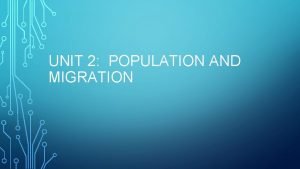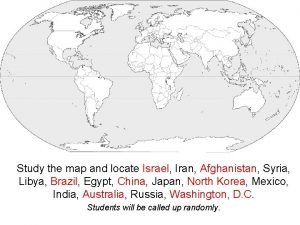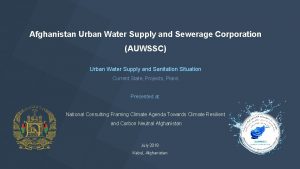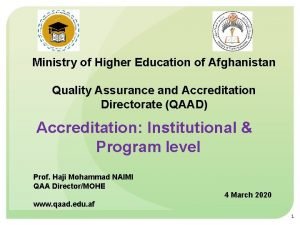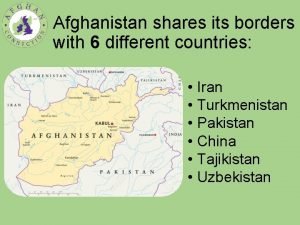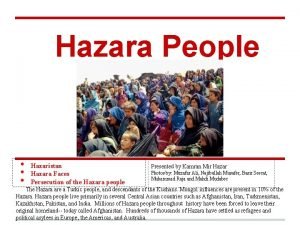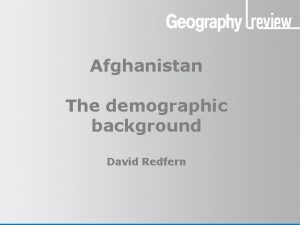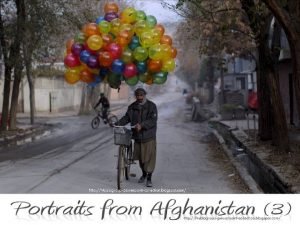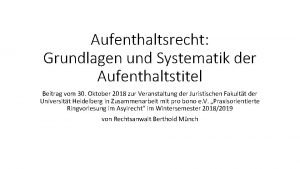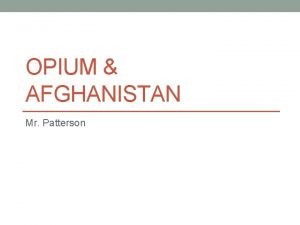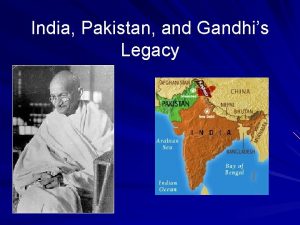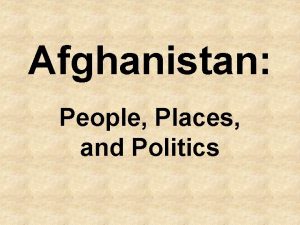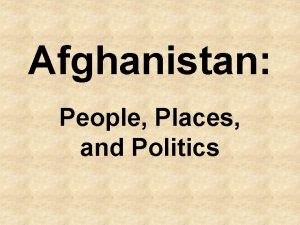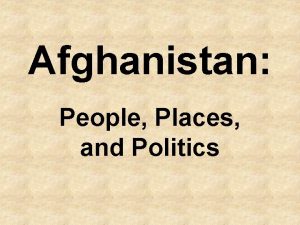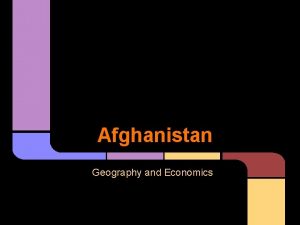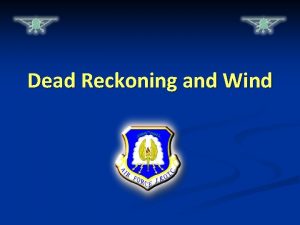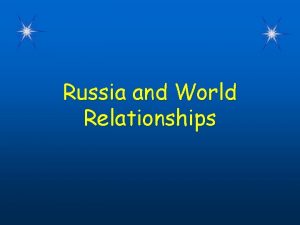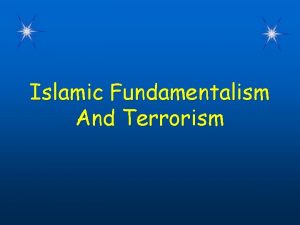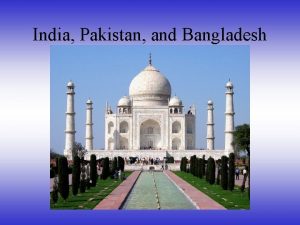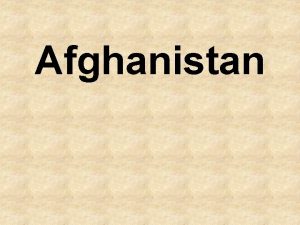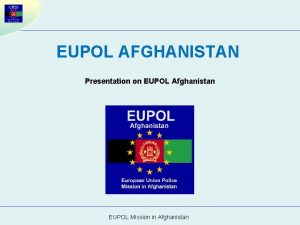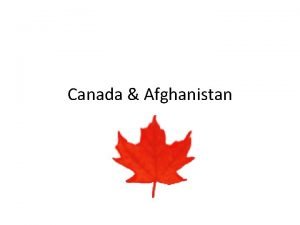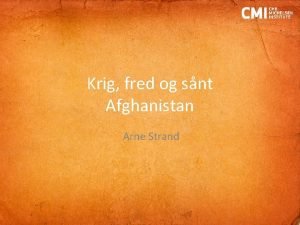India Pakistan and Afghanistan WarmUp Questions CPS Questions



























- Slides: 27

India, Pakistan, and Afghanistan

Warm-Up Questions CPS Questions (1 - 2) Chapter 2, Lesson 3

Overview Ø The precolonial history of the Mughals in the Indian subcontinent Ø The encounter with Europe and the colonial period in the region Ø The history of the struggle for independence in South Asia Chapter 2, Lesson 3

Overview, cont. Ø What caused the partition and war between India and Pakistan Ø How Muslim-Hindu strife affects the politics and economics of South Asia Ø Which groups have struggled for control in Afghanistan and why Chapter 2, Lesson 3

Quick Write What approach should British India have taken to independence? Why? (Note to teacher: Use “Pick a Student” button in CPS) Chapter 2, Lesson 3

The Precolonial History of the Mughals in the Indian Subcontinent Ø Early 16 th century, the Mughals invaded India Ø Dynasty lasted 200 years Ø Akbar (1556 -1605): Notable Mughal Ruler Ø Conquered lands Ø Encouraged good relations with Hindus Chapter 2, Lesson 3 Melanie Stetson Freeman / © 2003 The Christian Science Monitor

The Precolonial History of the Mughals in the Indian Subcontinent, cont. Ø Mughals gave the arts room to flower Ø The Taj Mahal ØCrowning achievement of Mughal architecture Ø 20, 000 laborers Ø 22 years to complete Chapter 2, Lesson 3 Melanie Stetson Freeman / © 2003 The Christian Science Monitor

The Encounter With Europe and the Colonial Period in the Region Ø British East India Company Ø 1619: Several trade hubs Ø British had three motives: Ø Trade Ø Maintain security Ø “Uplift” the Indian people Ø The Sepoy Rebellion (1857 -1858) Chapter 2, Lesson 3 Andy Nelson / © 2006 The Christian Science Monitor

Learning Check CPS Questions (3 - 4) Chapter 2, Lesson 3

The History of the Struggle for Independence in South Asia Ø 1885: the Indian National Congress launched Ø Gandhi: led Hindus along the path to the independent country of India Ø Jinnah: “Father of Pakistan” (Muslim-majority country carved out of British India) Chapter 2, Lesson 3 ©Dinodia Images/Alamy Images

What Caused the Partition and War Between India and Pakistan Ø The Congress Party and the Muslim League couldn’t come to terms Ø June 1947: the British Government said it would create two states ØIndia ØPakistan Chapter 2, Lesson 3 Robert Harbison / © 2001 The Christian Science Monitor

What Caused the Partition and War Between India and Pakistan, cont. Ø On 15 August 1947 India became a dominion within the British Commonwealth Ø Hindus make up more than 80 percent of India’s 1. 14 billion people Ø Pakistan’s Muslims are mostly Sunni, but its large Shia minority faces attacks Chapter 2, Lesson 3

What Caused the Partition and War Between India and Pakistan, cont. Ø At independence, Pakistan was made up of two pieces of land—so-called West Pakistan and East Pakistan Ø Geographically, India stood between them Ø Civil disobedience broke out in the East Ø 1971: the independent state of Bangladesh was born Chapter 2, Lesson 3

Learning Check CPS Questions (5 - 7) Chapter 2, Lesson 3

How the Muslim-Hindu Strife Affects the Politics and Economics of South Asia Ø Impact of Cultural Identities Ø A social hierarchy that limits people’s economic potential: India’s caste system Ø Impact of Religion Ø Hindu-Muslim tensions worsened during the 1990 s Chapter 2, Lesson 3 Andy Nelson / © 2006 The Christian Science Monitor

How the Muslim-Hindu Strife Affects the Politics and Economics of South Asia, cont. Ø India Ø Congress continues to rule Ø Economy - world’s 12 th largest Ø Held back by lack of good infrastructure Ø Pakistan Ø Spent much of its history under military rule Ø Economic story is more troubled than India’s Chapter 2, Lesson 3

Which Groups Have Struggled for Control in Afghanistan and Why Ø Afghanistan - known as the crossroads of Central Asia Ø An Islamic country Ø Experts describe Afghanistan’s culture as an ethnic mosaic Ø Most of Afghanistan’s ethnic groups come from someplace else—legacy of centuries of invasion Chapter 2, Lesson 3 Robert Harbison / © 2002 The Christian Science Monitor

Which Groups Have Struggled for Control in Afghanistan and Why, cont. Ø The Taliban are an Islamic fundamentalist militia that governed Afghanistan for several years Ø The Taliban introduced an extremely strict version of Islam Ø And they sheltered 9/11 mastermind Osama Bin Laden Ø US forces and allies began a military campaign against the Taliban Chapter 2, Lesson 3

Review Questions CPS Questions (8 - 10) Chapter 2, Lesson 3

Activity 1: India, Pakistan, and Afghanistan Review Answer the questions on your worksheet about South Asian geography and history Chapter 2, Lesson 3

Activity 2: Comparing Gandhi and Jinnah Create a Venn diagram to compare and contrast Gandhi and Jinnah Chapter 2, Lesson 3

Activity 3: The Legacies of Invasion in Afghanistan Write a short essay on what you think are legacies of centuries of invasion in Afghanistan, and explain why Chapter 2, Lesson 3

Technology Enrichment: Class Dismissed in Swat Valley Watch The New York Times video to explore additional information and take notes. Chapter 2, Lesson 3

Review Ø In the early sixteenth century, the Mughals invaded India Ø The British had three main motives in India: trade, maintain security, and to “uplift” the Indian people Ø Mohandas K. Gandhi would lead Hindus along the path to the independent country of India Ø Mohammad Ali Jinnah would be known as the “Father of Pakistan” Ø Afghanistan has been known as the crossroads of Central Asia Chapter 2, Lesson 3

Summary Ø The precolonial history of the Mughals in the Indian subcontinent Ø The encounter with Europe and the colonial period in the region Ø The history of the struggle for independence in South Asia Chapter 2, Lesson 3

Summary, cont. Ø What caused the partition and war between India and Pakistan Ø How Muslim-Hindu strife affects the politics and economics of South Asia Ø Which groups have struggled for control in Afghanistan and why Chapter 2, Lesson 3

Next… Ø Done—India, Pakistan, and Afghanistan Ø Next—Environmental and Social Issues in Asia Chapter 2, Lesson 3 Mark Sappenfield / © 2007 The Christian Science Monitor
 Toward pakistan be all about afghanistan
Toward pakistan be all about afghanistan What music goes back to vedic period times around 100 b.c
What music goes back to vedic period times around 100 b.c Pakistan bangladesh
Pakistan bangladesh India pakistan bangladesh
India pakistan bangladesh Warmup ratio
Warmup ratio Warmup 65
Warmup 65 Gmass warmup
Gmass warmup Stratified warmup
Stratified warmup Surface area warm up
Surface area warm up Monorhyme
Monorhyme Multiplying exponents with same base
Multiplying exponents with same base Java warmup
Java warmup Define:warmup
Define:warmup Ethos warmup
Ethos warmup Tom schwartz tinman
Tom schwartz tinman Warmup 65
Warmup 65 Warmup end
Warmup end Map of israel and afghanistan
Map of israel and afghanistan Afghanistan urban water supply and sewerage corporation
Afghanistan urban water supply and sewerage corporation Ministry of higher education (afghanistan)
Ministry of higher education (afghanistan) Afghanistan bordering countries
Afghanistan bordering countries Afghan kite flying
Afghan kite flying Hazaristan map
Hazaristan map Afghanistan demographic transition model
Afghanistan demographic transition model The kite runner webquest answers
The kite runner webquest answers Ivan the terrible accomplishments
Ivan the terrible accomplishments Farzana jalabi afghanistan
Farzana jalabi afghanistan Aufenthaltstitel afghanistan
Aufenthaltstitel afghanistan



